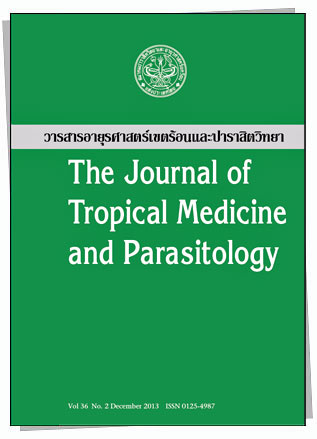Dermatophytosis: from bench to bedside
Main Article Content
Abstract
Dermatophytosis (Tinea infections or Ringworm), considered as a superficial mycosis, is one of the most common cause of cutaneous fungal infections particularly in tropical countries. This disease mainly affects the skin, hair and nails. The classification of dermatophytosis is based on their normal habitats (as geophilics, zoophilics and anthropophilics) and site of infection, for instance scalp infection (tinea capitis), the bearded area (tinea barbae), the trunk (tinea corporis), the groin (tinea cruris), the nails (tinea unguium) and the feet (tinea pedis). Tinea infection varies in clinical presentations from mild inflammations to generalized eczematous skin rash. Dermatophytes consist of 3 main genera including Trichophyton, Epidermophyton and Microsporum. The organisms are transmitted by either direct contact with infected host or indirect contact with infected exfoliated skin, personal wares and contaminated appliances. Fungal diagnostic tools for dermatophytosis include Wood’s lamp, direct microscopic examination with potassium hydroxide (KOH) and fungal culture which is considered as the most accurate means of diagnosis. Treatment of dermatophytes relies on their clinical presentations. In case of uncomplicated lesions, they can be adequately treated with topical antifungal agents. Contrary to the chronic or widespread infections, the most effective measure to cure these conditions is systemic antifungal therapy. This review presents an updated brief summary and basic knowledge of dermatophytosis which may be beneficial to clinical applications, new treatment developments and further scientific research.

